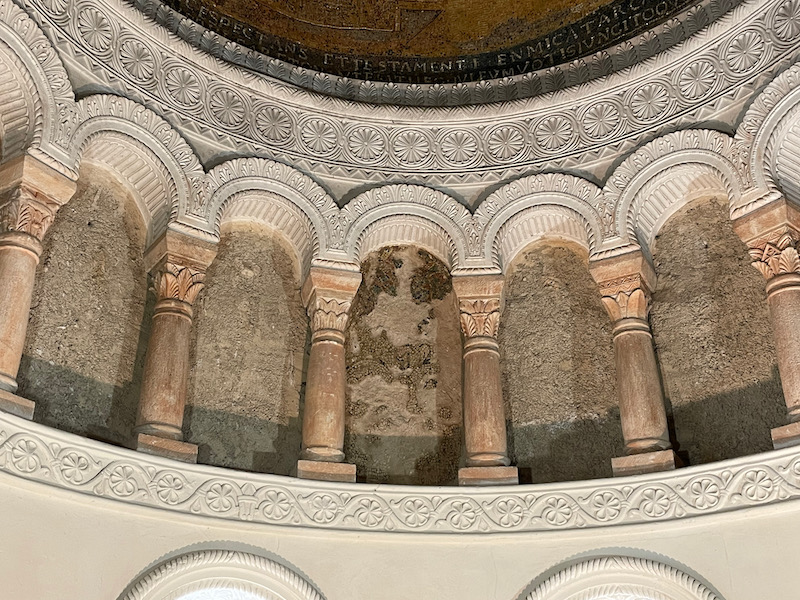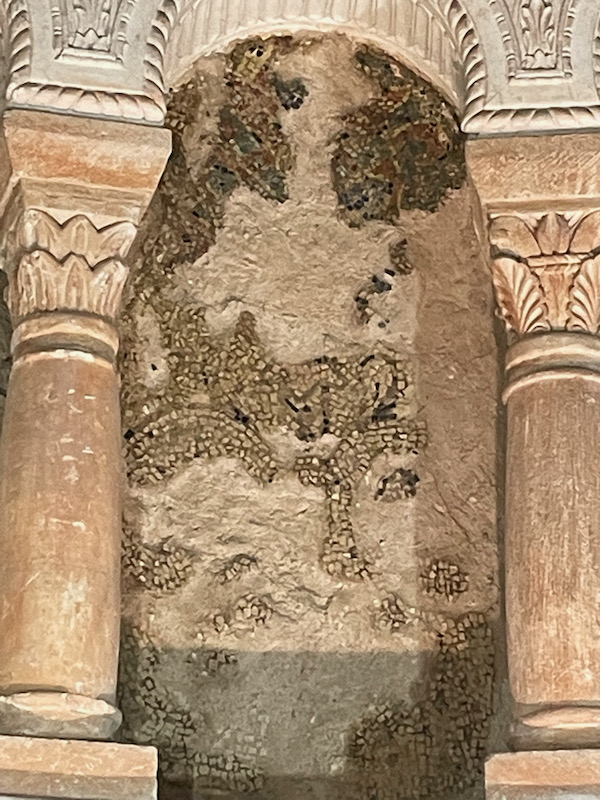Our Blog - Loire Valley Trip - Oratoire de Germigny de Pres
The Carolingian Oratory of Germigny-des-Prés, also called the Church of the Very Holy Trinity, is a rare example of architecture from the era of Charlemagne. Between 803 and 806 by the Bishop of Orléans, the oratory is the only remaining part of his villa. It is the only church in France to have preserved original parts of a Carolingian-style mosaic. This original church was laid out in the shape of a Greek cross (where all 4 arms are the same length) with a lantern tower in the middle to allow in light. It was damaged by fire in the early part of the 9th century, and restored by Hugues I, abbot of Saint-Benoît-sur-Loire, between 1060 and 1067.
In the 15th century, it was expanded by adding a nave, making the shape more like a typical church in the shape of a Latin cross. Until the middle of the 19th century, it was considered the oldest church in France. But it was almost completely rebuilt in 1876 with only the buried foundations and the mosaic remaining. With this reconstruction, it lost that title.
Here you can see the older section, with the round chapels. Then the long nave section (with the 2 columns that hold up a porch) which was added in the 15th century. The tall square part on top is the central lantern tower.
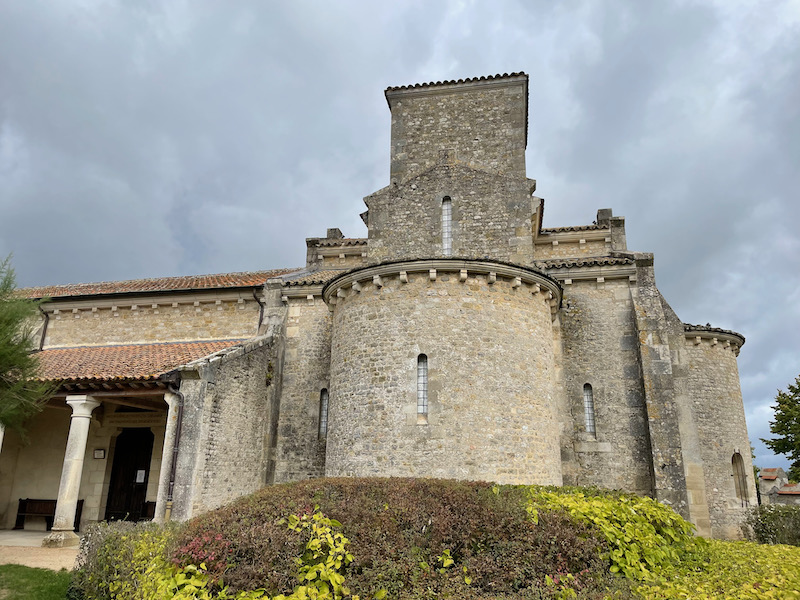
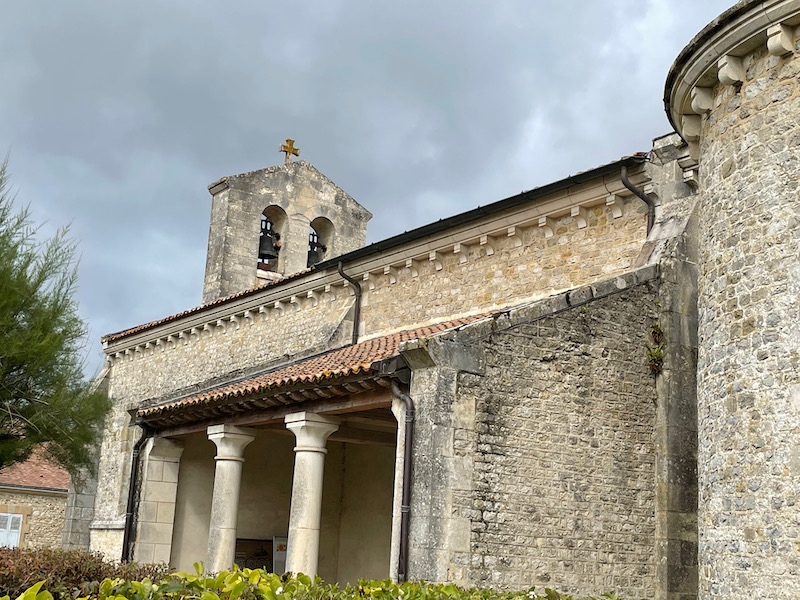
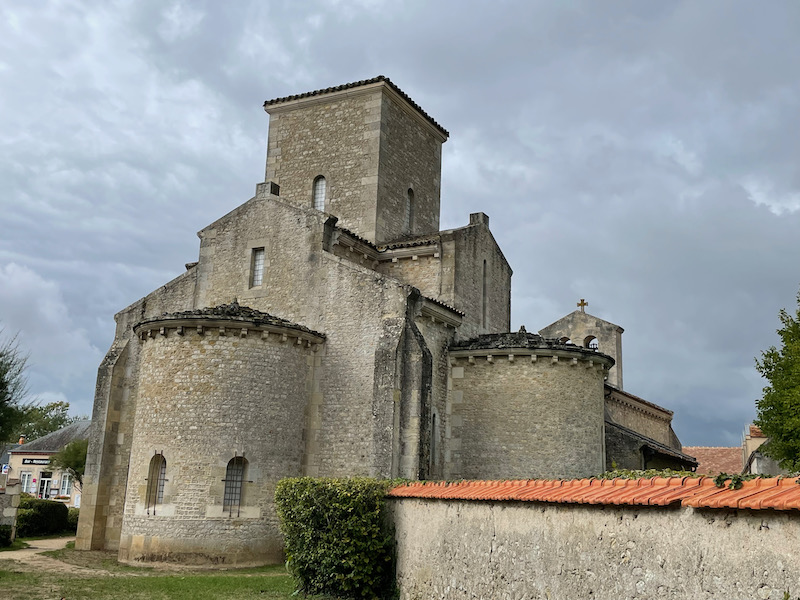
Inside, this is the 15th century nave, with the wooden roof. There are also a few nice statues in the nave, including Joan of Arc and Sainte Germaine.

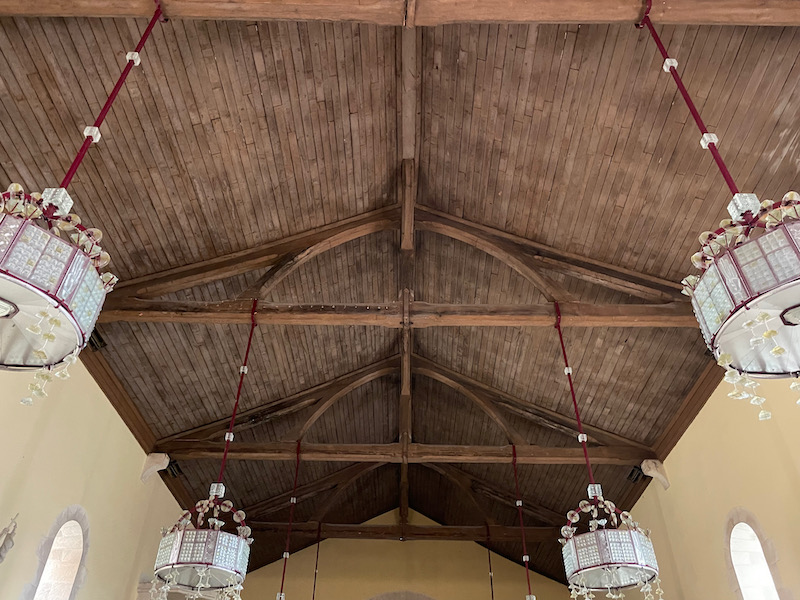
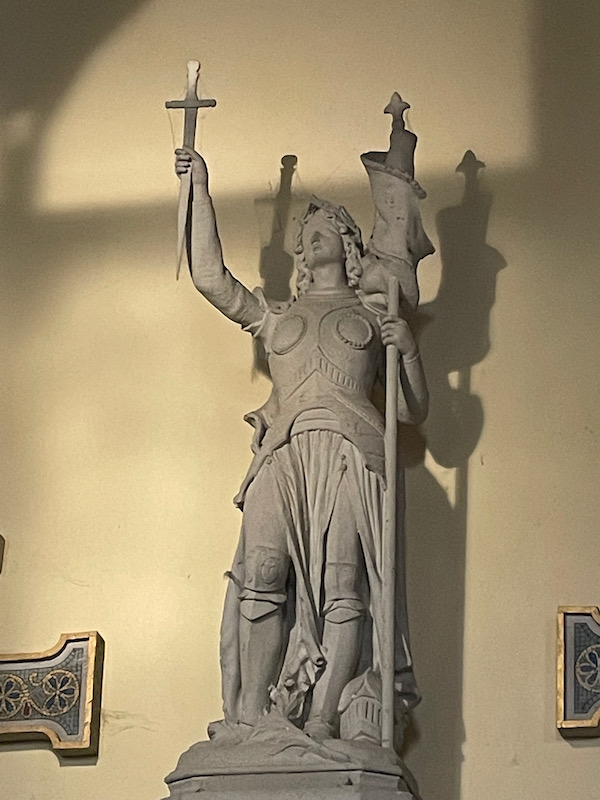
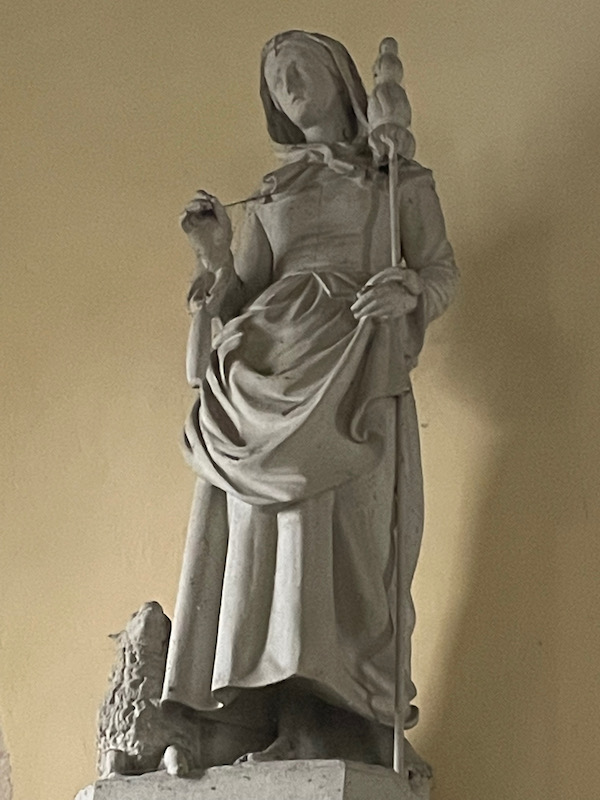
This is the middle of the original Greek cross church where the lantern tower is.
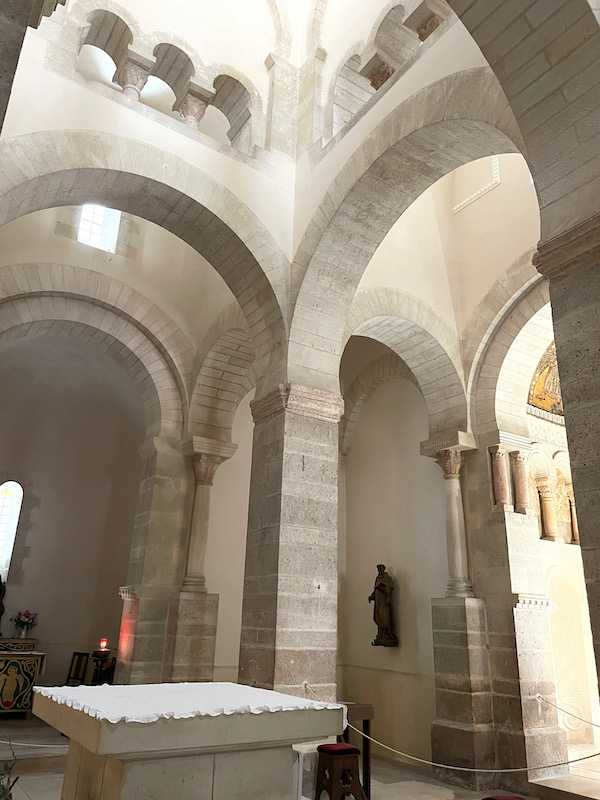
The pieta, which sits underneath the mosaic, is carved oak from the 16th century.
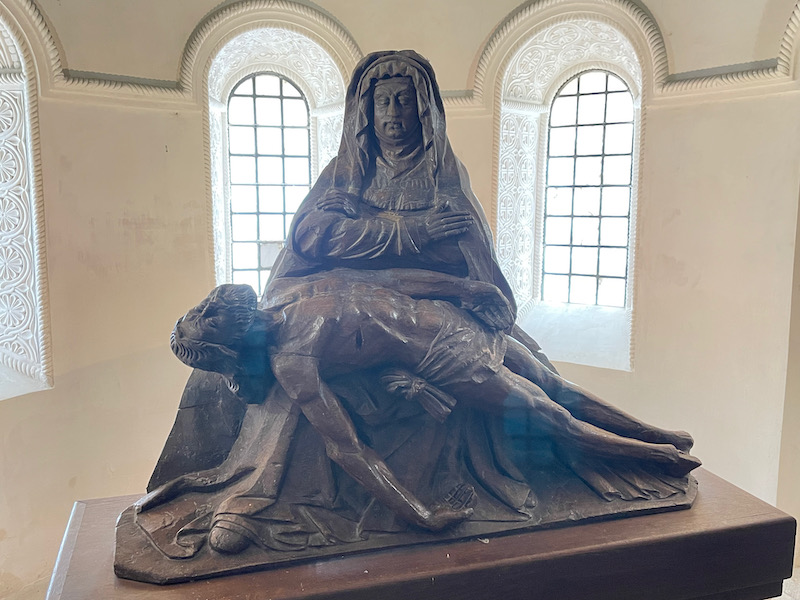
A statue of Sainte Anne, also carved in oak, but this one is from the 15th century. The close-up is a little bright, but it shows the detail better.
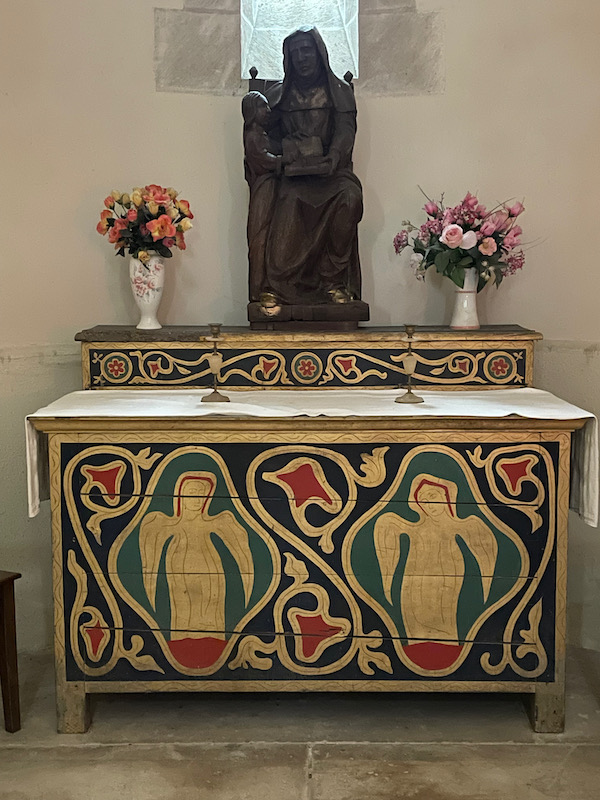
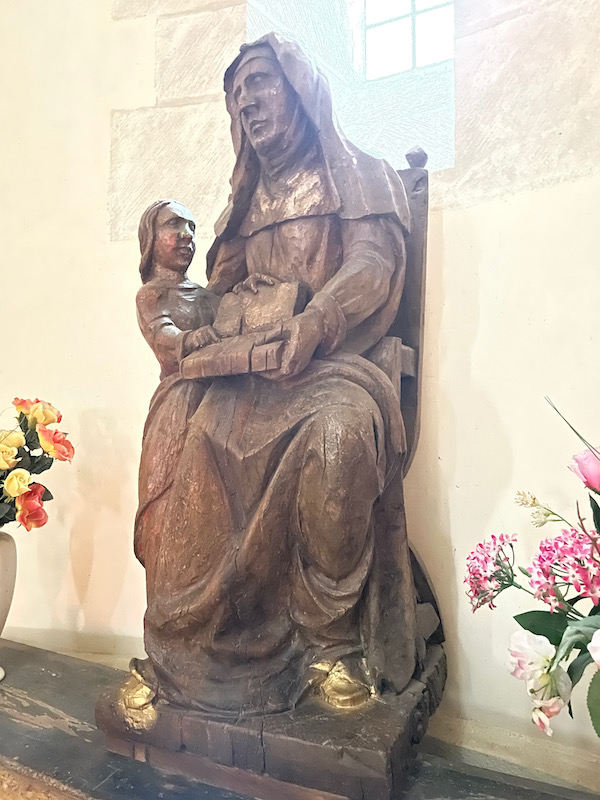
I left the mosaic for last. In the 18th century, a scholar was visiting the church and discovered the mosaic. Soon after, it was covered up with with a thick coating, like the other walls of the church. In the early 19th century, parts of this coating started coming off due to water damage, and some of the glass cubes were taken by children of the village as game pieces. The mosaic was restored between 1841 and 1856. The subject is very unique, since the mosaic occupies the place in the church that Byzantine tradition reserves for images of the Virgin Mary enthroned, Christ on her knees, and surrounded by two angels, one on the right and the other on the left. Here, the subject is the Ark of the Covenant, the chest containing the tablets of the law as handed down to Moses on Mount Sinai. At the base is an inscription which (translated) reads "See here and contemplate the Holy Oracle and her cherubim, here shines the Ark of the Divine Testament". It is the only Byzantine mosaic in France with two angels surrounding the Ark of the Covenant and this scene is clearly inspired by mosaics from the Basilica of San Vitale in Ravenna, Italy. I'll show individual parts next.
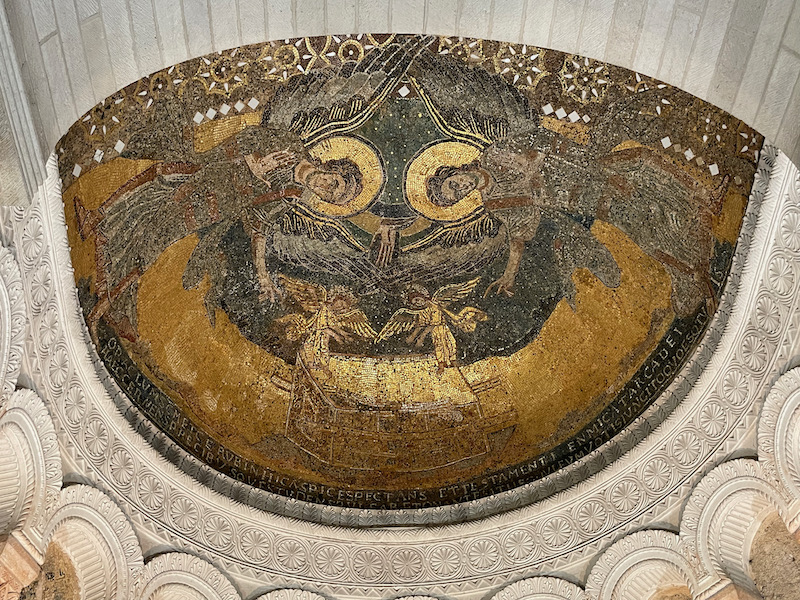
The Ark of the Covenant, which rarely appears in the decoration of churches, is represented in the form of a rectangular chest placed on the ground, represented by a wide band of gold. Through two rings passes one of the sticks used by the Levites to carry the Ark. Two cherubs are standing and they are dressed in golden tunics, with fiery red hair and silver halos.
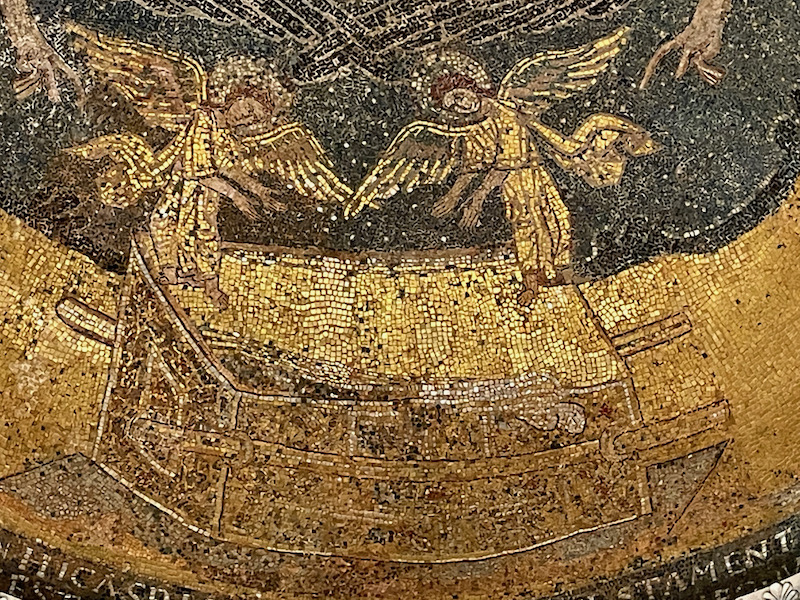
On either side of the Ark are two large angels. They are practically symmetrical and are dressed in long white tunics and wear sandals on their feet. With the index finger of their hands, they point to the Ark of the Covenant.
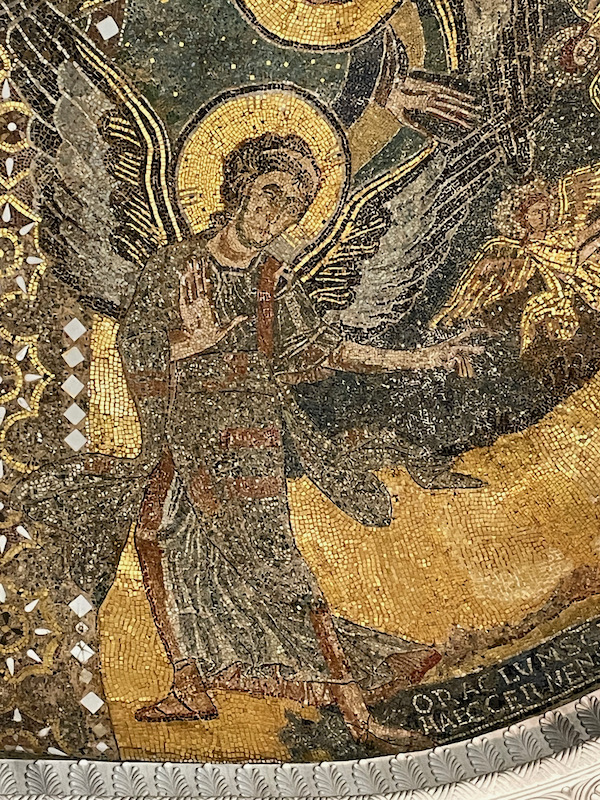
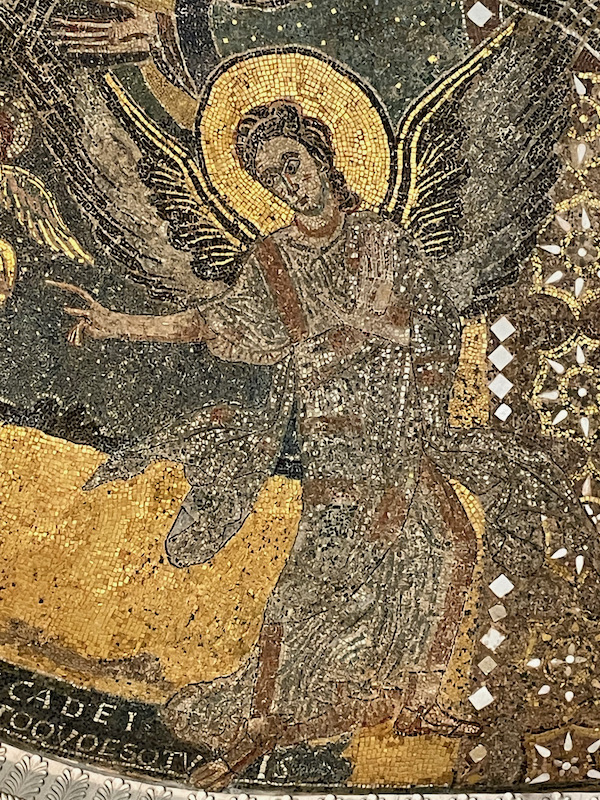
Below the mosaic is some really nice stucco-work and a few other mosaics which were not saved.
